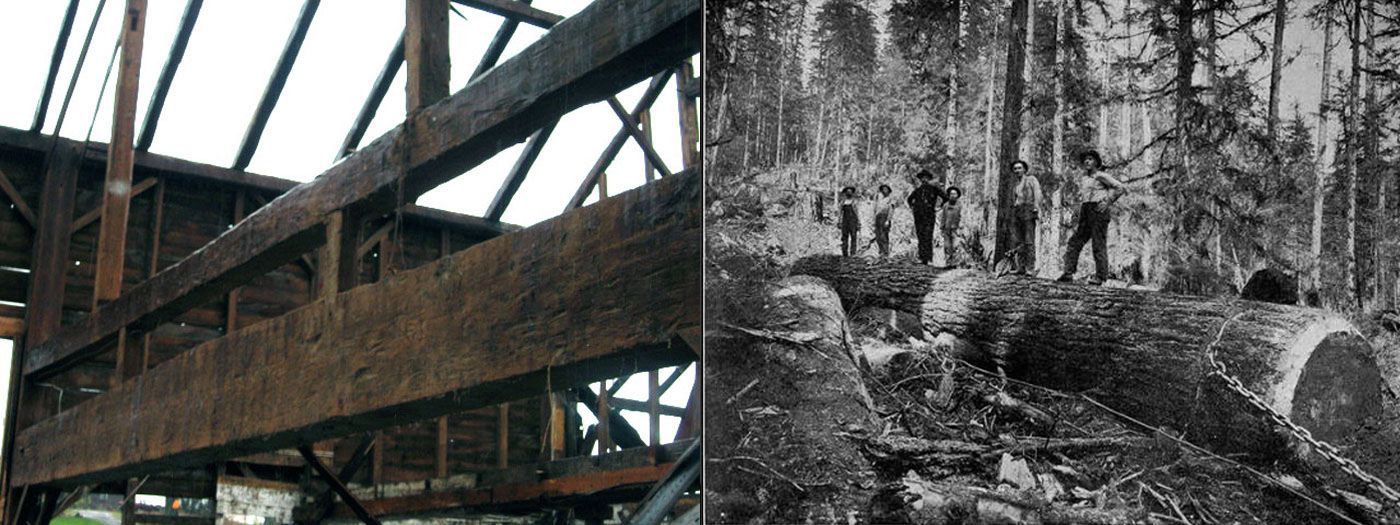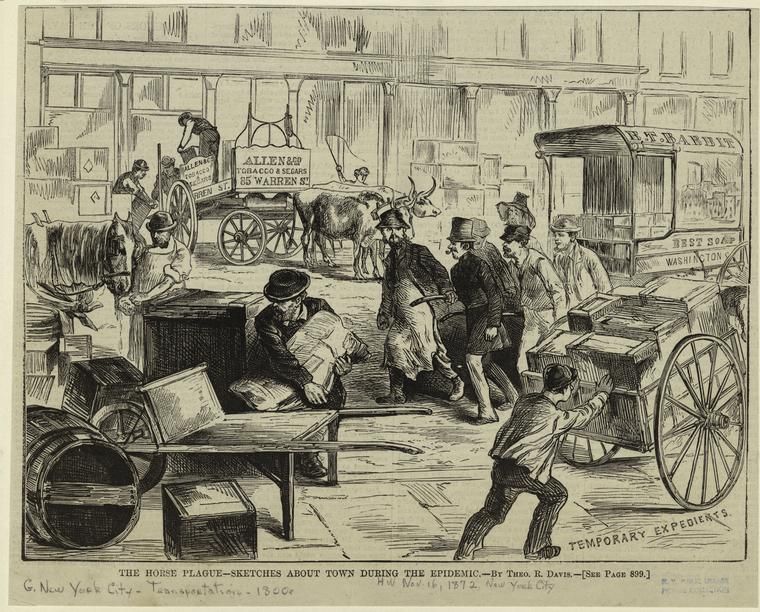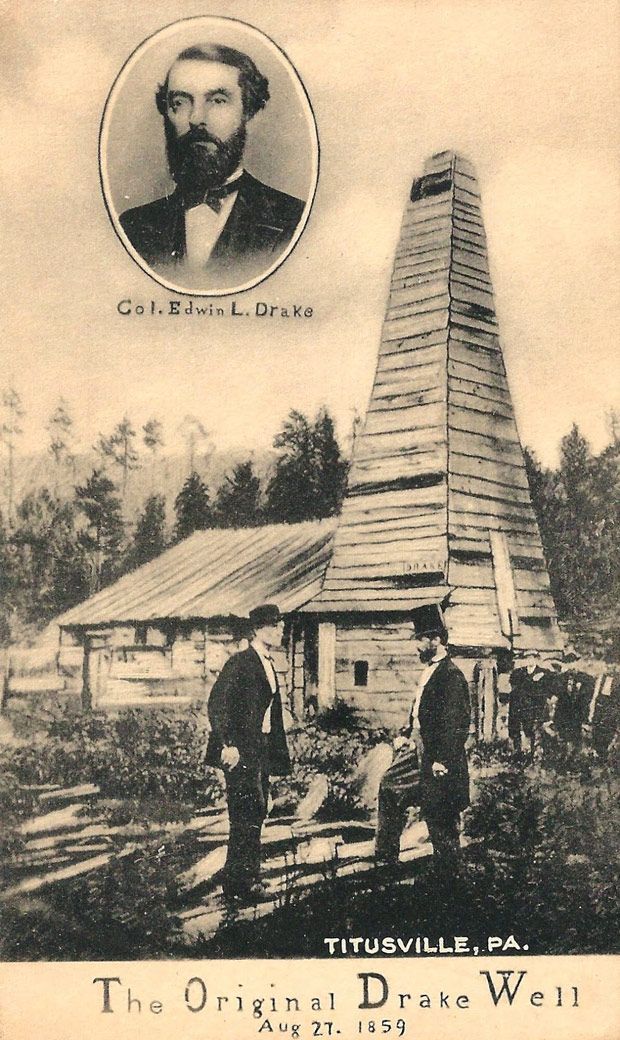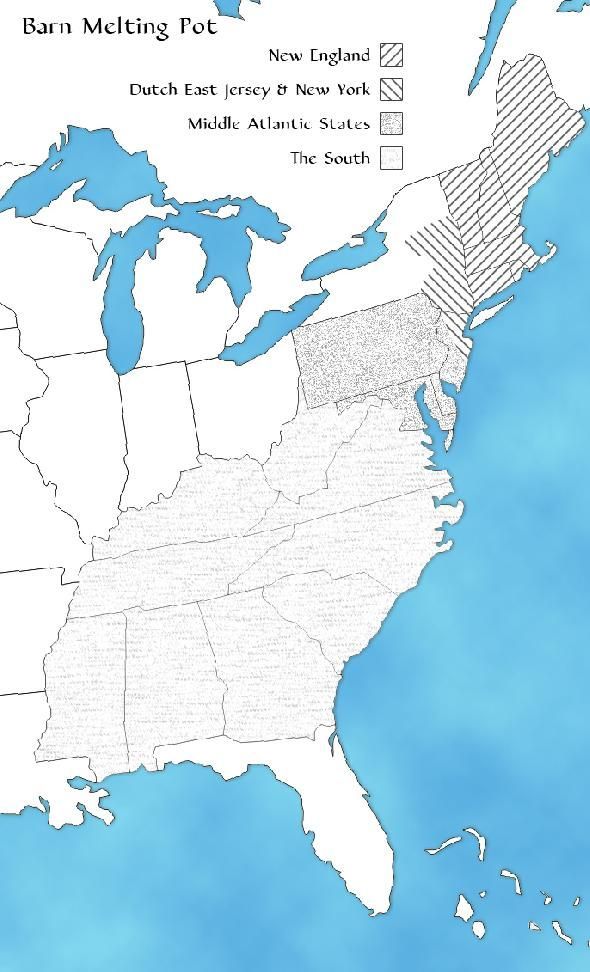Old World Meets New

More than any other factor, what differentiated American timber framing from its predecessors in the Old World was when the Old World pioneers came to America, they were confronted with a very different building reality in that the materials they had on hand to build with, namely trees, were vastly different from their experience in Europe. By the 1600’s many European countries like England, Ireland and Holland had been deforested. And though there was a tradition of timber framing, they had by this time, very poor quality trees to work with. For this reason they employed even the short and unstable crooks of trees in their buildings, a practice that became unnecessary in the New World.
Where had all the mighty English oaks gone to create this shortage of timber? Literally, up in smoke. This was before the age of coal-burning and wood was used for heating and cooking, as well as home building and wooden shipbuilding.
In our years of restoring historic timber framed barns, this hand hewn hemlock timber is the largest we have ever seen. It is part of a barn built in the Mohawk Valley of New York state circa 1840. The timber is 35 feet long and measures 13″ thick by 28″ at the widest point. That’s well over 900 board feet of lumber in a single beam.
After over 165 years of natural air drying, this beam weighs around a ton. When it was first cut green using only simple hand tools and transported with horses, it likely weighed over 3500 pounds!
Counting the tightly spaced growth rings, we determined that the tree from which this timber was hewn was around 300 years old when the early American farmer cut it to build his barn. It was a towering 100-year-old hemlock when the Pilgrims landed in Plymouth harbor in 1620.
Through THeir Eyes
Can you imagine the awe these settlers to the New World felt when they arrived and saw the virgin American forest? They were probably stunned . . . and intimidated. The New World forest contained straight trees over one hundred feet tall: pines, hemlocks, oaks, chestnut (which was said to have made up one third of the northern forest), maples and beech, just to mention a few of the species. And sometimes this difference between New and Old World trees had deadly consequences. The first permanent settler to Bergen County in Northern New Jersey in 1670,

David Demarest, lost his namesake and oldest son to a falling tree soon after they arrived. The Demarests had immigrated first to New York from the low country of Holland and prior to that were persecuted Huguenots in France. They had probably never encountered a forest when they began to build their homes and barns on the bank of the Hackensack River.
So here in America converged a unique combination: skilled European wood craftsmen and an untouched, virgin forest. And when the two were combined, they produced for a period of time, the finest and largest barns ever built in the world, during what we might call the “Golden Age of Barns,” before the Eastern forest was clear cut to make way for agriculture and industry, and the Industrial Revolution brought an end to the art of timber framing in America.





